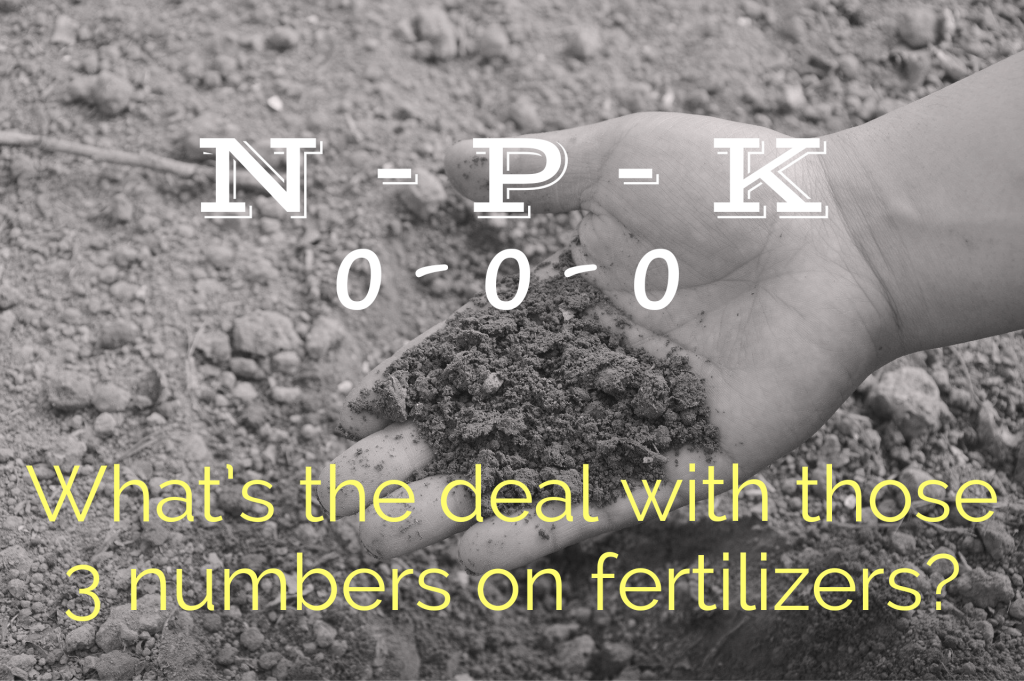What’s the deal with the 3 numbers on the fertilizer packages?
The 3 numbers denote three of the most important fertilizer components
- NITROGEN
- PHOSPHOROUS
- POTASSIUM

Remember in science class when we all groaned when the periodic table came up?? I as well as many other classmates were like “pppphhhhhh….like I’m going to use this shit when I get out of here!” Ya, I was wrong…along with many other things. So here we go, back to science class.
These 3 numbers are elements from said Periodic Table, the numbers themselves are the percentages of these elements per weight of the package of fertilizer. The balance of the package is made up of other nutrients or inert ingredients like minerals etc.
For example, lets say you have a fertilizer bag with the following info on it: 10-06-10
10-06-10 in a 5lb bag = 10 % Nitrogen – 6% Phosphorus – 10% Potassium
To determine the weight if each element in the bag there is a simple calculation: % of element x weight of bag = weight of specific element
- .10 x 5 = 0.5lbs of Nitrogen
- .06 x 5 = 0.3lbs of Phosphorus
- .10 x 5 = 0.5lbs of Potassium
WHY IS THIS IMPORTANT TO KNOW?
You want to grow stuff right? Well if you test your soil and you determine that you’re low on lets say phosphorus, and it’s suggested on the bag that you apply 1 pound of phosphorus per 1,000 square feet of lawn, then the 5lbs bag mentioned above would cover 300 square feet, that literally gives you how far that bag will go.
(1,000 x 0.3 = 300) at the recommended rate.
Before anyone asks, you can get the basic soil test kits here in Canada at any hardware or garden center store. Look for the PH, NPK test kits – they’re multi coloured.
Nutrient Basics
There are 17 essential nutrients required for optimal plant health and produce. I have broken them down to 3 basic groups that you can read about below:

